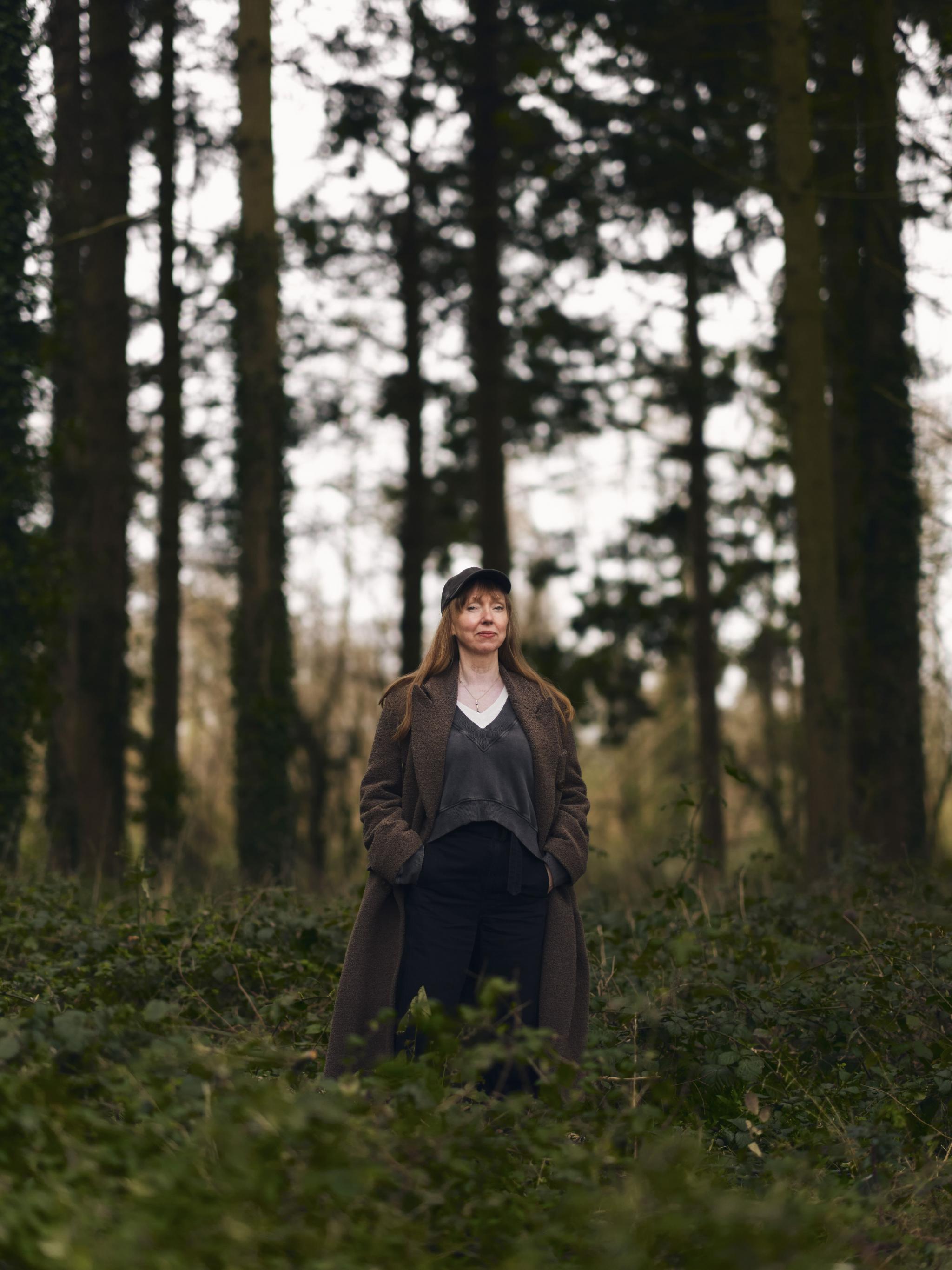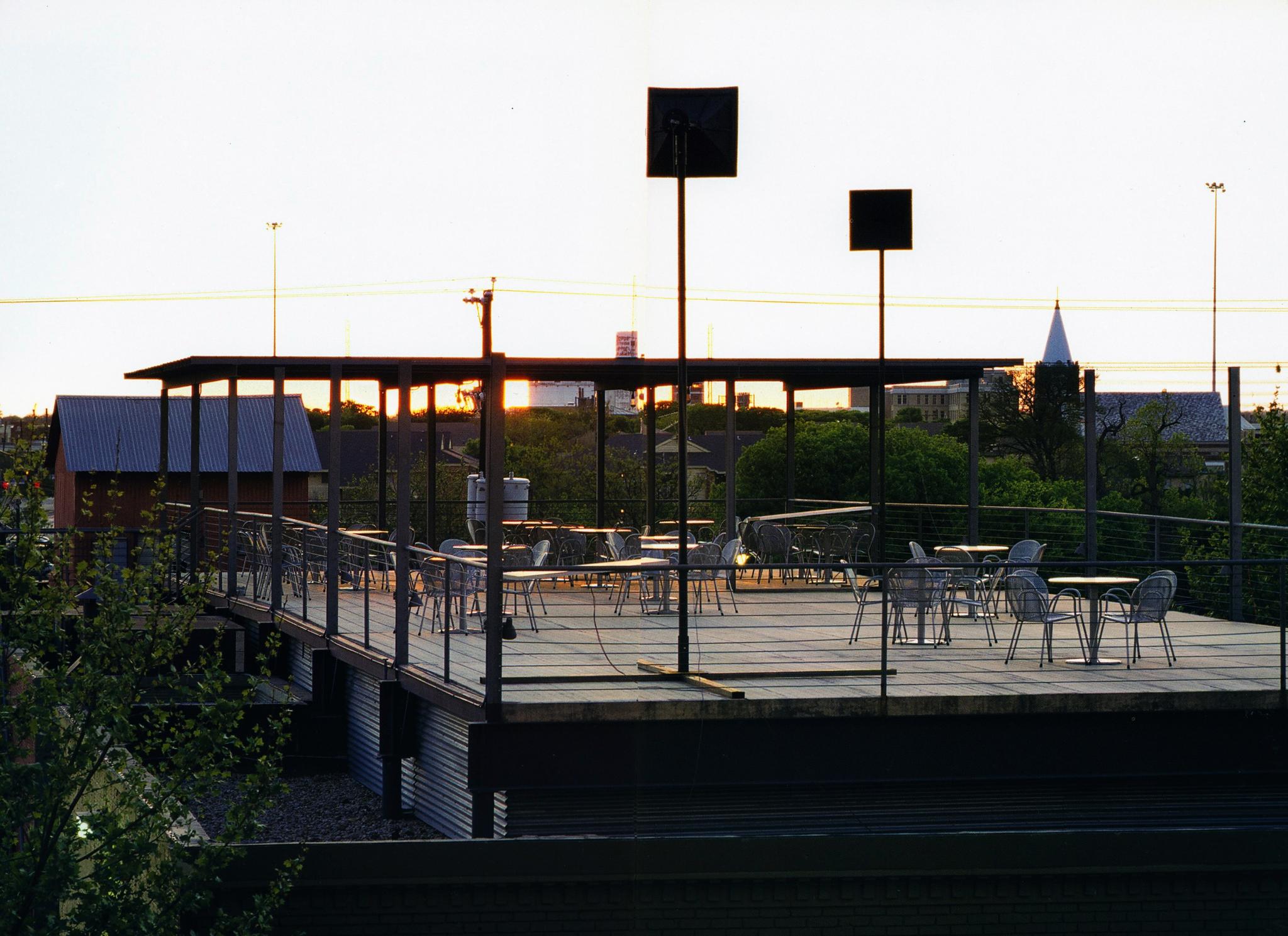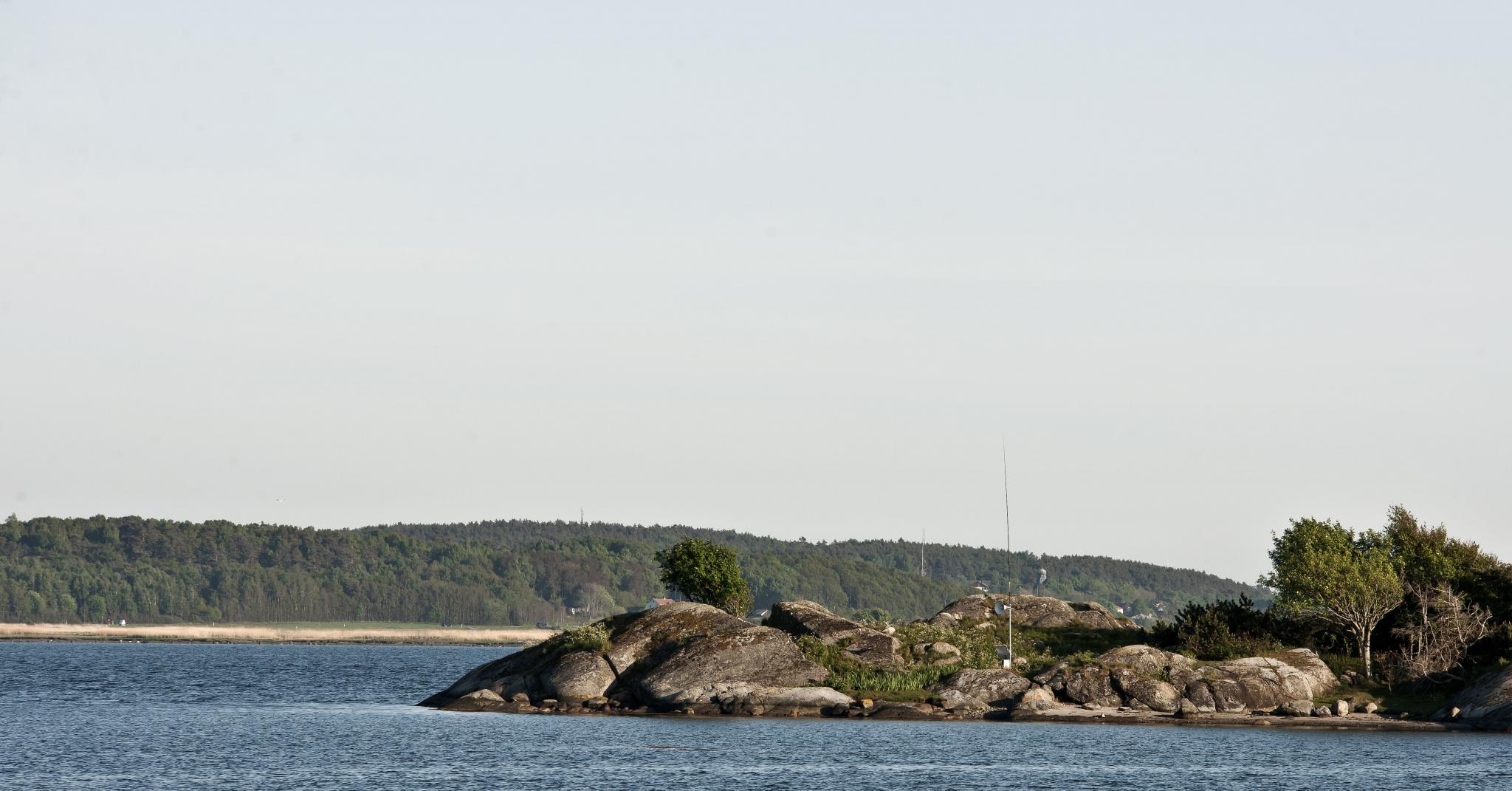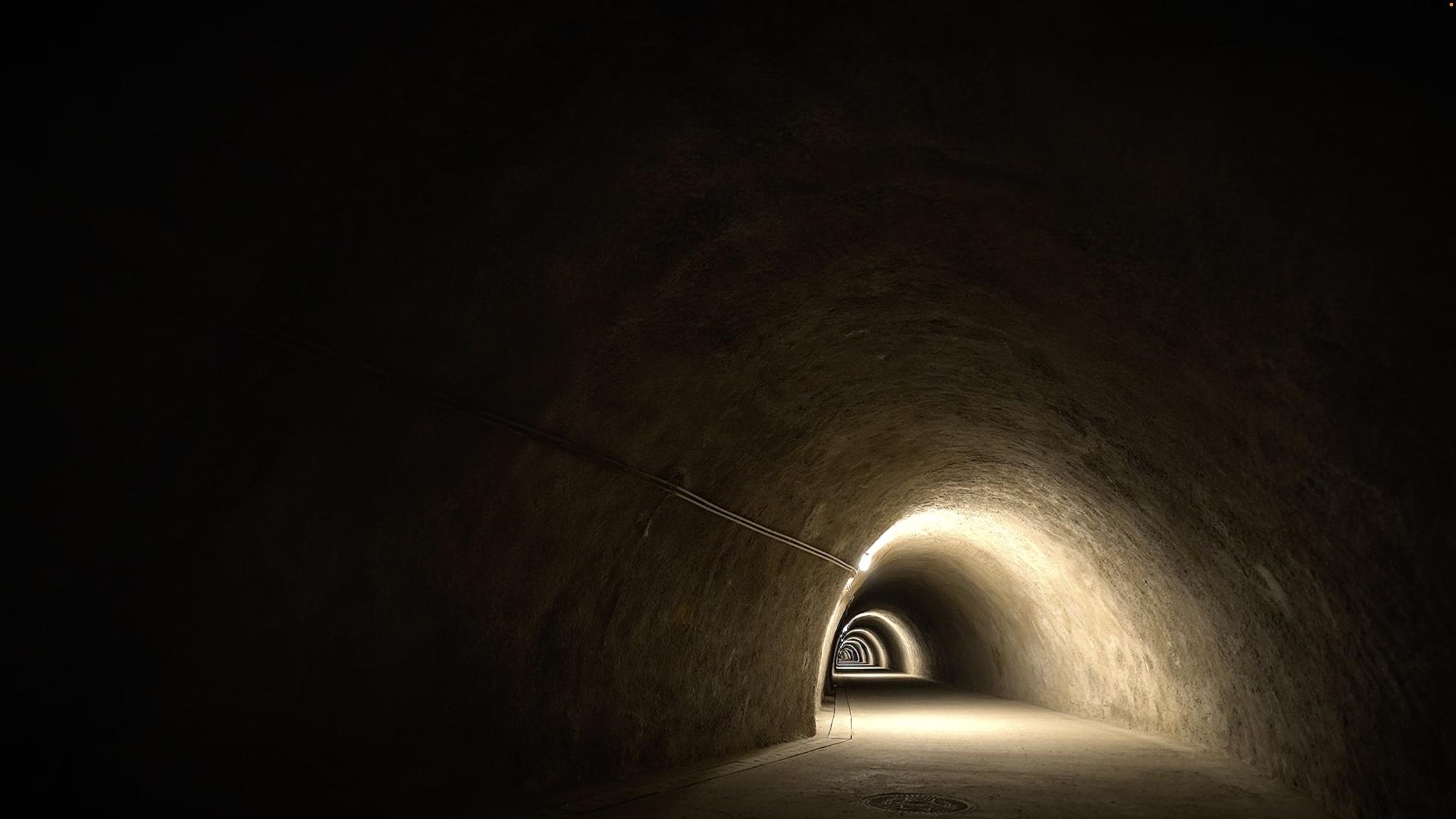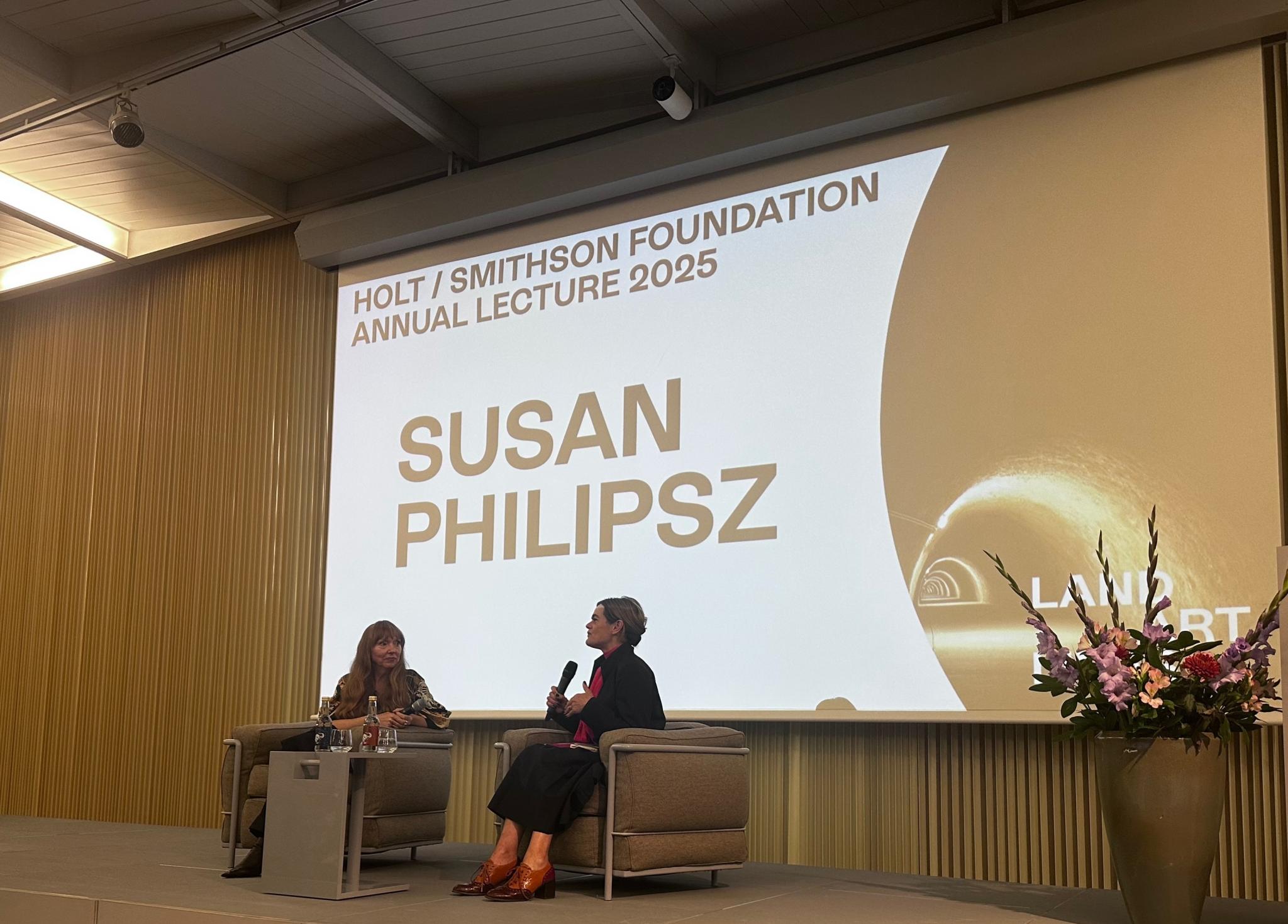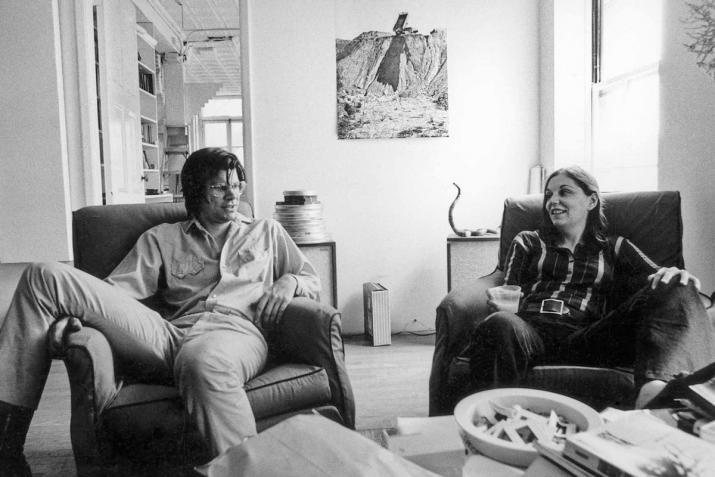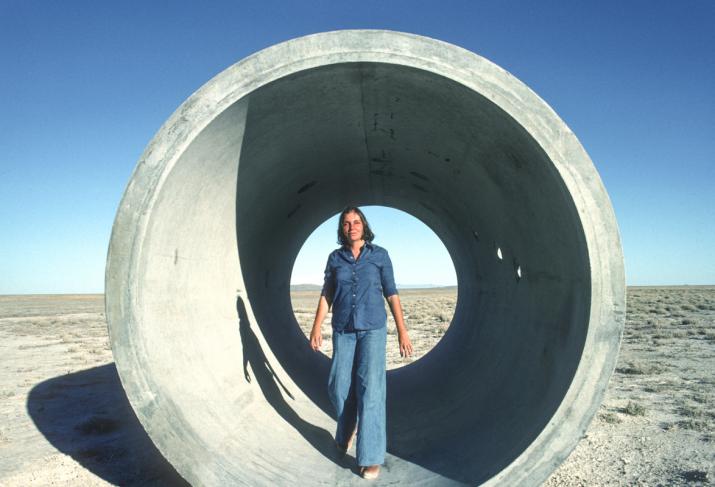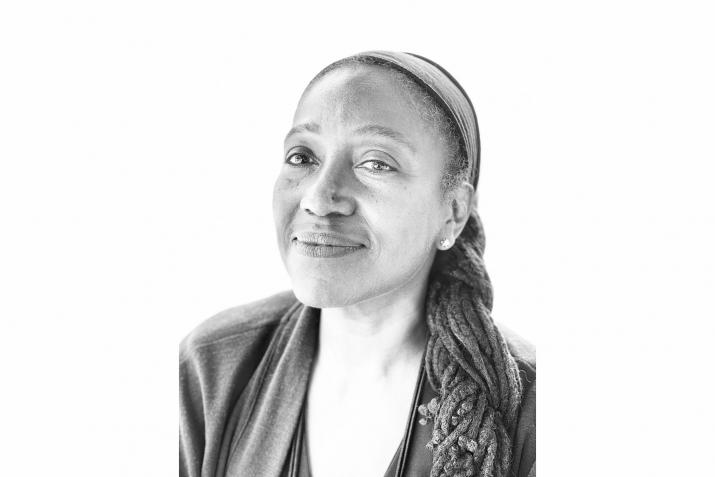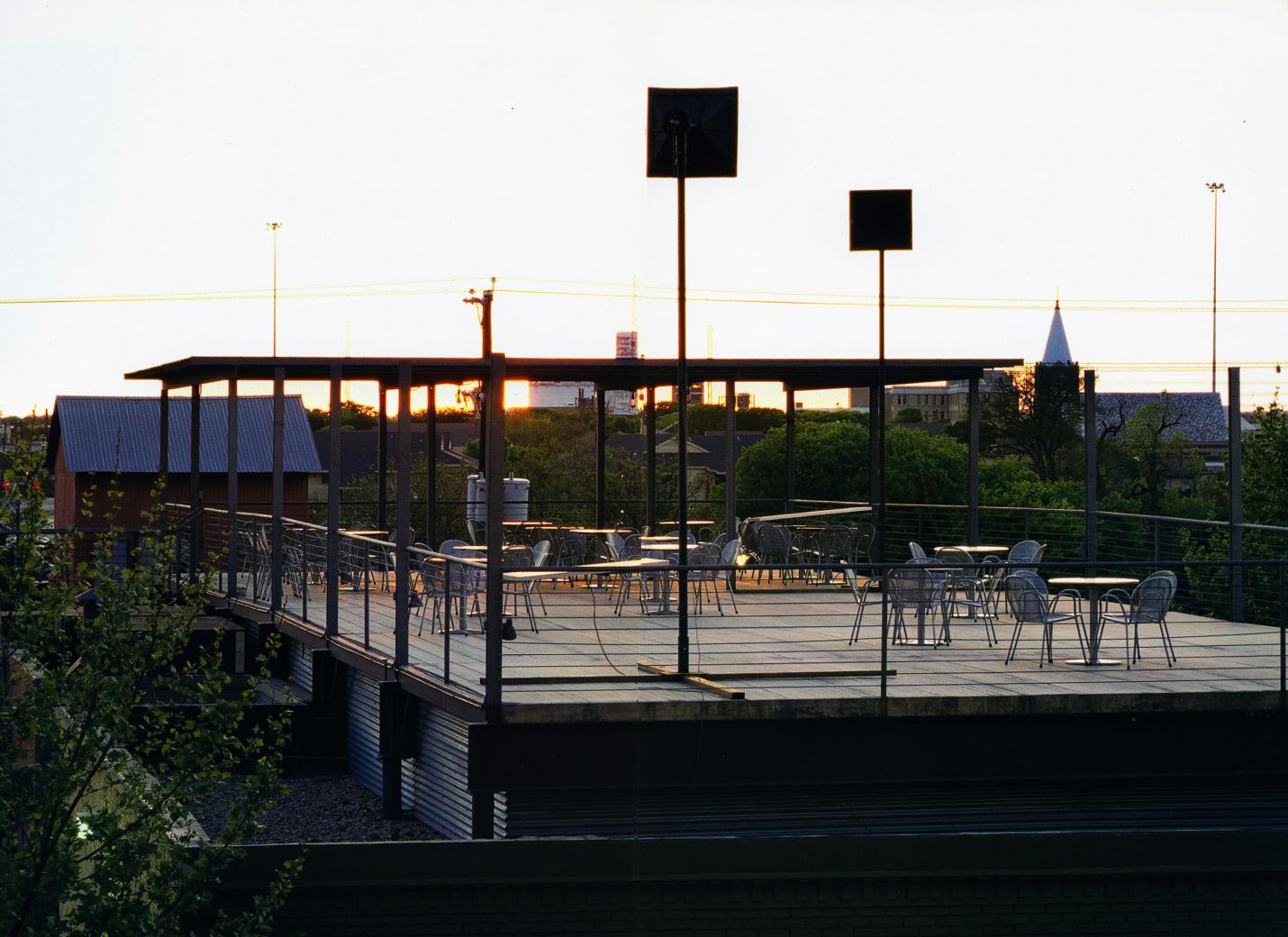
2025—Susan Philipsz at the Kröller-Müller Museum

Our 2025 Holt/Smithson Foundation Annual Lecture speaker was Susan Philipsz, an artist whose work profoundly resonates with the legacy of Nancy Holt. The event took place at Kröller-Müller Museum, the Netherlands on Saturday October 11, 2025, programmed in partnership with Land Art Lives.
Scottish artist Susan Philipsz calls herself a sound architect. In 2010, she won the Turner Prize, the first time a sound artist had been nominated and won the prize. She creates space, feeling, and memories with sound in public places such as bridges, stations, parks, or supermarkets. Philipsz describes: “My work deals with the spatial properties of sound and with the relationships between sound and architecture. I am particularly interested in the emotive and psychological properties of sound and how it can be used as a device to alter individual consciousness. I have used sound as a medium in public spaces to trigger an awareness in the listener, to temporarily alter their perception of themselves in a particular place and time.”
Philipsz has presented her work worldwide and is included in museum collections around the world. Her 2019 sound installation The Wind Rose is part of the Kröller-Müller Museum's collection, and is currently on display on the museum grounds. In her lecture, Philipsz will discussed Nancy Holt's influence on her art and ideas, and was in conversation with Lisa Le Feuvre, Executive Director of the Holt/Smithson Foundation.
About our partners: Land Art Lives and the Kröller-Müller Museum
Land Art Lives is an on-going program, organized by Kunstmuseum M. and Land Art Flevoland, investigating the relevance of land art in our present times. Exploring land art in the context of its history, its new manifestations, questions of impermanence, and the urgent ecological and social issues of today, Land Art Lives is committed to rethinking the idea of land art as large-scale, monumental works of art situated in the vast American desert. The Kröller-Müller Museum, situated within the Hoge Veluwe National Park in Otterlo, Netherlands, is renowned for its extensive collection of nineteenth and twentieth-century art, including the second-largest assemblage of Vincent van Gogh’s works and several important drawings by Robert Smithson relating to Broken Circle/Spiral Hill (1971), his most significant earthwork. Complementing the indoor galleries is the museum’s expansive sculpture garden: established in 1961, it features over 200 sculptures by artists including Auguste Rodin, Henry Moore, Jean Dubuffet, Marta Pan, Pierre Huyghe, and Richard Serra, whose Spin Out, for Robert Smithson was completed just after Smithson’s passing in 1973.
